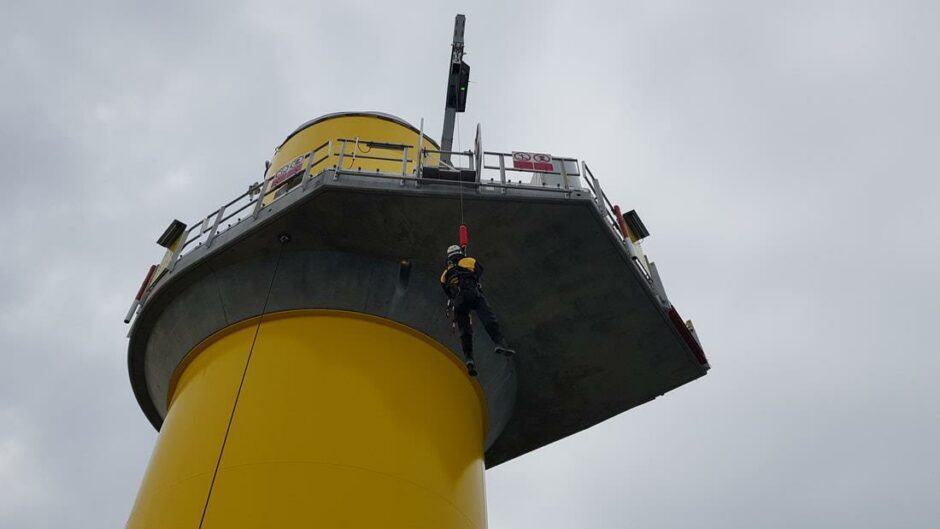
Offshore foundation manufacturer Sif has signed a memorandum of understanding (MoU) with Scottish firm Pict Offshore to integrate its personnel lifting system into new monopiles.
The Netherlands-based group will deploy Pict’s Get Up Safe (GUS) system as standard into its new Skybox monopile foundation.
The GUS system is a heave compensated lifting solution aimed at ensuring offshore maintenance technicians can access offshore wind turbines from crew transfer vessels safely.
The system tracks the motion of the vessel deck and automatically adjusts the line position to ensure that transferring personnel are always kept safe, even if the vessel is moving in variable wave and weather conditions.
Inverkeithing-based Pict is part owned by offshore wind giant Ørsted, and the system has already replaced landing structures at the Hornsea 2 offshore windfarm.
It will now become the standard method of access for Sif’s Skybox foundations, notable for their lack of transition pieces (TPs). This means the Skybox can be installed in one lift and no brackets need to be welded onto the monopile, reducing costs and maintenance and increasing driveability and overall efficiency.
Together, Sif said it hopes the two innovations can bring further significant cost, efficiency and safety benefits to offshore wind.
The first deployment of the Skybox including the GUS system will be in the second half of this year when the second demonstrator “Skybox Full” will be built.
The “Skybox Lite” demonstrator that went offshore in 2021 now serves as a “mule” for an intense onshore testing and measurement campaign that will be executed over the summer this year. Incorporating all lessons learned from this campaign, the “Skybox Full” demonstrator will be built after summer for offshore deployment in 2023.
The project is being executed in line with its original planning, both Technology Readiness Level as well as DNV certification are on track for serial deployment in 2024.
Further deals will see GUS used in the US, having been selected for use by Ørsted at three projects: the 132-megawatt (MW) South Fork Wind, Revolution Wind and Sunrise Wind.
